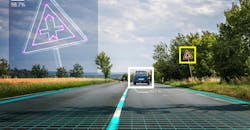Let’s face it, self-driving cars aren’t living up to their hype. I’ve seen hype before and then some. But nothing like that showered upon autonomous vehicles (AVs). They’re supposed to solve the world’s transportation problems and reduce vehicle deaths and accidents to near zero. Really?
A recent Axios survey indicates that only about 66% of Americans said they feel unsafe around AVs. 80% of seniors fear AVs. An earlier AAA survey identified that 73% of Americans said they’re afraid to ride in an AV and 63% said they felt that the road was unsafe with when sharing the road with AVs. It appears that most of the public is still uncomfortable with the idea of self-drivers. Reflecting on this movement, here are my observations and thoughts about this. Some of these may be yours.
- AVs aren’t perfect and like everything else, they never will be. Did the automakers and other developers who have spent billions misjudge the potential given all the hype? Did they underestimate the technological complexity? Or did they ignore what the market is saying? Is it possible that the AV’s lack of acceptance is mainly a colossal PR problem?
- What if the regulations, insurance, etc. of AVs are so strict that adoption will not be in the volume expected?
- What if cities limit the use of AVs to specific areas or roads?
- Is it possible that accidents, injuries, and deaths will actually increase with the adoption of AVs? No one really knows.
- Is it possible that there will be no government tax credits for AVs as there has been for electric vehicles (EVs)?
- What if the public simply eschews AVs?
- What if the more rapid introduction of practical and affordable EVs upstages AVs?
- Does it matter that AVs with internal combustion engines (ICEs) do nothing to improve the emissions and global-warming problem?
- What do you do with AVs if the public rejects them? Initiate unmanned delivery of goods?
- Will AV taxis really be viable? Will you ride in one?
- Will the benefits of AV trucks, including 18-wheelers, actually lower transportation costs and improve safety?
- Are AV buses viable? Would you let your kids ride in an AV school bus?
- What is the economic impact on all those millions of truck, taxi, and bus drivers who lose their jobs to AVs?
- Will the expected initial real-world AV price of over $100,000 seriously limit the sales of AVs?
- Will AVs ever be able to successfully navigate through areas of road construction or unpaved back roads or in heavy rain, fog, snow, or dust?
Can Wireless Help Advance the Self-Driving Car Movement?
One helpful addition may be communications. At some point, the government is expected to mandate vehicle-to-vehicle (V2V) and vehicle-to-infrastructure (V2I) radios in all vehicles. Cars will be able to talk to one another, exchanging data like precise location, direction of travel, speed, braking condition, turn expectations, and the like to surrounding cars.
Moreover, vehicles will get data from roadside infrastructure units, such as weather and road conditions, traffic updates, and construction issues in advance of encountering these problems. When combined with the improved sensor/fusion processing combinations, certainly this communication should make AVs safer and help them come closer to nirvana.
Two systems are competing for the automotive communications standard. Dedicated short-range communications (DSRC) and cellular or C-V2X. Both use the 5.9-GHz band for two-way communications of data. DSRC uses a version of Wi-Fi technology called 802.11p. It’s a proven technology that’s been thoroughly vetted in tests. C-V2X is a variant of LTE and uses the existing cellular system for communications. C-V2X also has a direct car-to-car feature called PC5. There’s a planned path to 5G for C-V2X once that system is up and running.
C-V2X will probably win this battle. Whatever standard is chosen, though, AVs will be far more intelligent and thereby less likely to have an accident or kill a pedestrian.
If nothing else, some communications capability will make AVs and standard vehicles safer. As ongoing R&D keeps improving the sensor medley and processing power for AVs, perhaps these advances can be added into the current non-AVs with advanced driver-assistance systems (ADAS). With each increment of ADAS improvements using AV technology, vehicles will gradually morph into full level 5 AVs. Then, maybe, the AV goal could be achieved with something like a software upgrade.
Rapid integration of AVs into the real world of driving will also help determine the outcome—success or not. There will still be accidents, collisions, deaths, and other screw-ups along the way. Human drivers will always be better. But for those who passionately want or need an AV, you will eventually get one. Just not yet.
By the way, if you haven’t already, check out the National Highway Transportation Safety Administration’s (NHTSA) website under Technology & Innovation for more details. The NHTSA is under the umbrella of the U.S. Department of Transportation, which recently issued a Request for Comment (RFC) on the V2V/V2X idea. RFC closing date is January 25, 2019.
About the Author

Lou Frenzel
Technical Contributing Editor
Lou Frenzel is a Contributing Technology Editor for Electronic Design Magazine where he writes articles and the blog Communique and other online material on the wireless, networking, and communications sectors. Lou interviews executives and engineers, attends conferences, and researches multiple areas. Lou has been writing in some capacity for ED since 2000.
Lou has 25+ years experience in the electronics industry as an engineer and manager. He has held VP level positions with Heathkit, McGraw Hill, and has 9 years of college teaching experience. Lou holds a bachelor’s degree from the University of Houston and a master’s degree from the University of Maryland. He is author of 28 books on computer and electronic subjects and lives in Bulverde, TX with his wife Joan. His website is www.loufrenzel.com.

